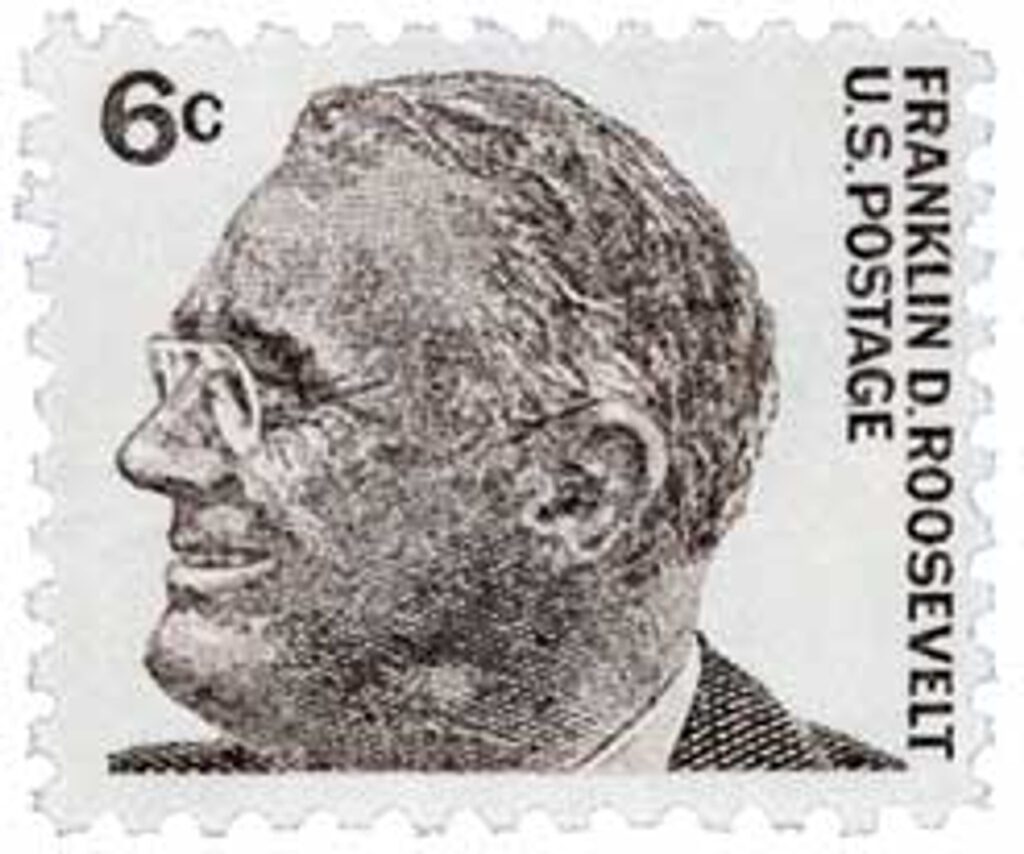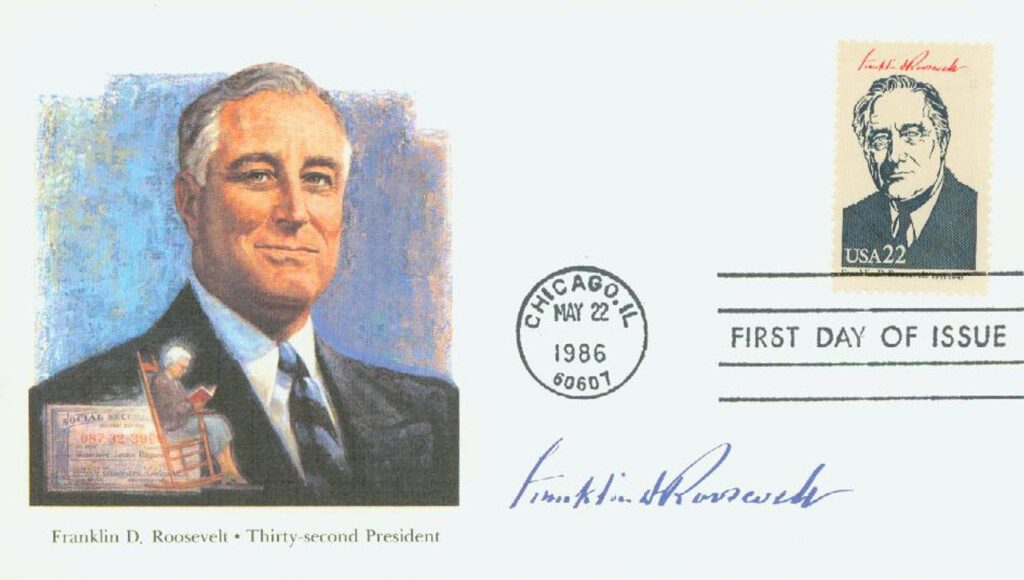On November 7, 1944, Franklin D. Roosevelt made history as the first—and only—US president elected to a fourth term. His remarkable political career reshaped both the country’s government and its role in the world.
Franklin Delano Roosevelt first ran for president in 1932, at the height of the Great Depression. He faced incumbent Herbert Hoover, whose policies many Americans blamed for the country’s severe economic collapse. Roosevelt’s message of hope, confidence, and reform electrified voters. His campaign promise of a “New Deal” offered not only recovery, but a vision of renewal. Once elected, he moved quickly to fulfill that promise—launching dozens of programs within his first 100 days in office. These efforts, including job creation and financial reforms, helped stabilize the economy and restore public faith in government. Roosevelt’s leadership and optimism inspired struggling Americans, earning him a landslide re-election in 1936.
By the end of his second term, the world had changed dramatically. War had erupted across Europe and Asia, and Roosevelt faced a difficult decision: whether to follow George Washington’s example and step aside, or continue leading through the mounting global crisis. No president before him had sought a third term, and even Roosevelt himself had once implied he wouldn’t. But as Nazi Germany advanced through Europe, he believed his experience was essential to America’s security. Despite fierce opposition from critics who accused him of seeking too much power, Roosevelt decided to run again in 1940—and he won handily.
Just over a year later, on December 7, 1941, Japan attacked Pearl Harbor. The next day, Roosevelt delivered his famous “Day of Infamy” speech, declaring war on Japan and thrusting the United States into World War II. He quickly forged strong alliances with Britain and other countries, forming the Allied Powers to confront Germany, Italy, and Japan. The war effort dominated Roosevelt’s third term, and his steady leadership at home and abroad earned widespread respect.

As the war continued, Roosevelt faced yet another election in 1944. Though he easily secured his party’s nomination, growing concerns about his health and age dominated the discussion. Many in the Democratic Party opposed his current vice president, Henry Wallace, believing him too liberal and unpredictable to serve as president if Roosevelt were unable to continue. Party leaders urged Roosevelt to select Senator Harry S. Truman instead. Though Roosevelt barely knew Truman, he agreed to the change in the name of party unity.
Meanwhile, the Republicans chose New York Governor Thomas E. Dewey as their nominee. Dewey, a skilled prosecutor and moderate Republican, campaigned on a promise to end what he called the inefficiency and overreach of Roosevelt’s New Deal programs. He called for smaller government and reduced regulation, arguing that America needed new leadership to manage the transition from wartime to peacetime.
Initially, Roosevelt intended to run a quiet campaign, relying on his record and wartime reputation to carry him through. But rumors about his declining health began to spread. In response, Roosevelt launched an active campaign tour in October 1944, traveling in an open car and giving speeches to demonstrate his vitality. His appearance reassured many Americans, and the country’s recent military victories in Europe and the Pacific further boosted morale.
On November 7, 1944, Roosevelt won re-election, though by a smaller margin than in his previous campaigns. The victory made him the only president in US history to serve four terms—a reflection of both the extraordinary challenges of his time and the public’s trust in his leadership.

Tragically, Roosevelt’s health continued to deteriorate. On April 12, 1945, just five months into his fourth term, he suffered a cerebral hemorrhage at his retreat in Warm Springs, Georgia, and died at age 63. Vice President Harry S. Truman was sworn in as president that same day, taking command during the final months of World War II.
In the years following Roosevelt’s death, many lawmakers argued that no one person should hold presidential power for so long again. The debate led to the ratification of the 22nd Amendment in 1951, which formally limited future presidents to two terms in office. Roosevelt’s unprecedented tenure thus reshaped not only America’s government but also the constitutional framework that defines it.
Click here for more stamps honoring US presidents.
| FREE printable This Day in History album pages Download a PDF of today’s article. Get a binder or other supplies to create your This Day in History album. |
Discover what else happened on This Day in History.







He was easily the greatest president save for Lincoln. A great president does what is needed for his country to flourish and survive. Roosevelt always did that. I was born during his third term and do not remember those times, but my parents saw him as the best leader of his time. My study of what he did and what he stood for made me agree with them. I still see his programs that lasted as outstanding.
FDR was a great leader. Although I disagree with some of his domestic programs, he did what was necessary at the time. In foreign matters he was terrific, even though he was soft on Russia.
We could use a leader like FDR today. I do not believe that the Democratic Party has such a candidate. Bernie Sanders is the closest to FDR.
Four times President, FDR made the history.
While some of his policies may have been misguided, his capacity as a leader is unquestionable.
Outstanding articles. Plan to use them when discussing stamps with young collectors. They add interest to collecting. God Bless America.
Great article on FDR. It was a very dark time in our history as a nation and while I don’t want to make it sound like everything that FDR did and said was perfect; that he didn’t make deals and mistakes, he did get us out of a huge depression and part way through a deplorable world war. He was a remarkable statesman. (Sidebar: I think the Congress should have term regulation, as well — the same as the President. 8 years, maximum, and out. Try to get that change made into an amendment! LOL! 🙂 Thanks, Mystic. Good work.
It’s interesting to note that Roosevelt, who is regarded as one of our greatest presidents, was beloved by millions during his years in office but detested by others, mainly Republicans and big business types. Since his death, Republicans have repeatedly tried to undo parts of his New Deal programs– Social Security, minimum wage, protection for unions, etc.
Is regulating the huge corporations, guaranteeing a minimum wage, and providing a minimum retirement for retired workers socialism? The actual socialists on the left disliked him, and the hard line old school conservatives on the right hated him. Franklin Roosevelt was a middle of the roader.
There is no doubt that FDR convinced the money people that if they did not give a small percentage of their monies, they would eventually loose it all . . . see Europe at that time.
However why did he write Executive Order 9066, especially when he had information on German spies in the U.S. during the First World War I The Germans and Italians were not touched.
Very
Impressive!!✌✌?☀
Come on Mystic, not a word about FDR’s stamp collection. Even in the midst of the depression and the challenges of the war, Roosevelt always found time for his stamps. His collection gave him great peace of mind and brief opportunities to relax.